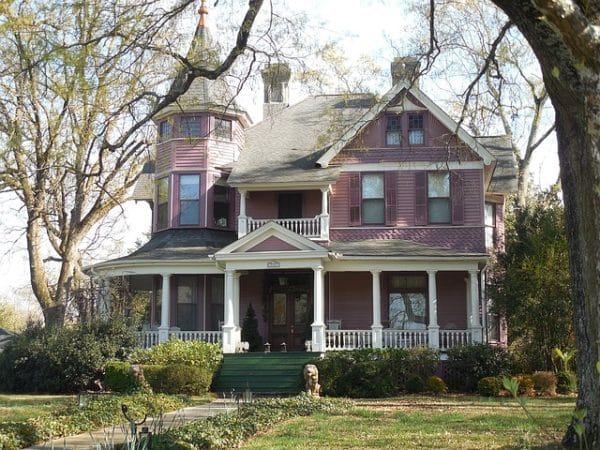The idea of living in an old house is something which appeals to a lot of people. Making your life feel like something which has come out of a book, buildings which have been around for a long time always hold a unique charm, capturing the feeling of a house well lived in. Of course, though, along with gathering stories, a place like this will also come with a few little problems. To help you to solve these before you move into your new-old home, this post will be exploring them so that you don’t have to.

Repairs: Thanks to the way that time affects building materials, older homes tend to be at a much greater risk of falling into disrepair than newer ones. Of course, though, everyone knows this, and it won’t be a big surprise. Instead, the shock will come from the price here, as performing the maintenance an old building will need can cost a small fortune, especially if the place is protected by the local government. In some cases, you will be forced to use the original building methods as a way to preserve the history of your home. To make matters worse, older homes can also need code violation repairs. In essence, many older homes are made using materials or methods that used to be fine but have since been ruled as code violations. Therefore, if your house has any of these violations, it will be hard to sell it or you could come under some financial penalties. As a result, you need to find a code violation repair service to a) search for any unknown violations, then b) repair them. Naturally, newer homes don’t have this issue as they are built to the current standards and regulations.
Health: While you may not realize it, your home can have a huge impact on your health, and there are a lot of factors that contribute to it. Materials like asbestos are found in a lot of homes, causing issues that are so extreme that people need to get the help of a professional. Mesothelioma attorneys work for victims’ rights after a devastating diagnosis, but they will only be able to help with the financial side of things; not the illness. Along with this, issues like mold and insects often afflict older places, and these can bring health issues of their own.
Heating: Modern building standards force builders to ensure that homes meet a minimum set of requirements when it comes to keeping warm, but older homes won’t have this sort of protection in place. Instead, you will have to battle against the cold stone, drafts, and single-layered windows to keep your old place hot during the winter months. This can cost a small fortune when it comes to gas or electricity, while also wearing down your central heating system very quickly.
Reselling: Finally, as the last area to consider, selling an older property can also be a pain. People will be aware of the issues and risks which come with it, and won’t want to sign themselves up for a life of chasing problems. Of course, if you can present it well enough, this might not be a problem, but it doesn’t tend to work out this way. Living somewhere old can be a pleasure until it comes to moving as a result of this.

Hopefully, this post won’t put you off of the idea of living somewhere old, but will still give you an idea of what you need to look for when you’re choosing somewhere like this. There are plenty of reasons to avoid a home like this, but you can often overcome them with just a little bit of research and dedication.
Do you prefer an older home or a newer home?







Though they do have their problems, I prefer older homes as they clearly have a good track record for staying standing. Even if they do have repair issues and deleterious materials these are all things that, providing they aren’t structural, can be somewhat easily (if not inexpensively) fixed. I would personally never buy a brand new house purely for the fact that the initial settlement of the building can be make or break and I’d rather not be the first to find out the foundations are incorrectly laid or I just bought a house built in a disguised sand pit (it shouldn’t happen, but it does).
Looking at the evolution of building methods and practices over the centuries and whilst it is clear that we have made technological advances as well as improved the ‘regulation standard’ or as I like to call it ‘bare minimum requirement’, actual building practices seem to have declined somewhat. With the housing crisis and skills shortages, there’s a bit of a ‘just throw them up as fast as you can and as cheaply as we can afford to sell them’ culture nowadays. Whereas back in the Victorian/Edwardian and even prior to that, the owners (who were often developers) of the land were often responsible for the building of the house, and so they made them well and to last so that they might have a home that would last or be able to sell a home that would. Looking at the quality of bricklaying alone, older houses come heads and shoulders above that of today’s houses in my opinion.
This is an interesting post that people wanting to buy an older house should probably use as a spring board into the areas they ought to research because people often underestimate the TLC required to maintain and live in a period/historic house.
I myself prefer an old home with great bones. I love woodwork and plaster and you just don’t find the craftsmen ship in new homes. I love a home that has a story, one that I can add my chapter without having to write the whole book.